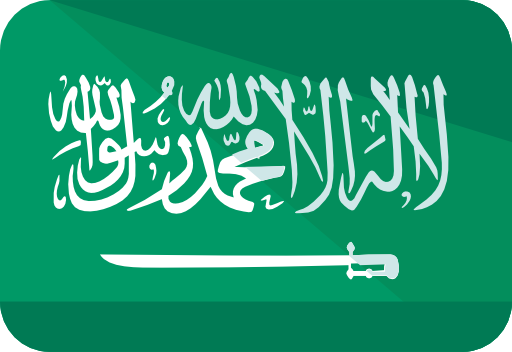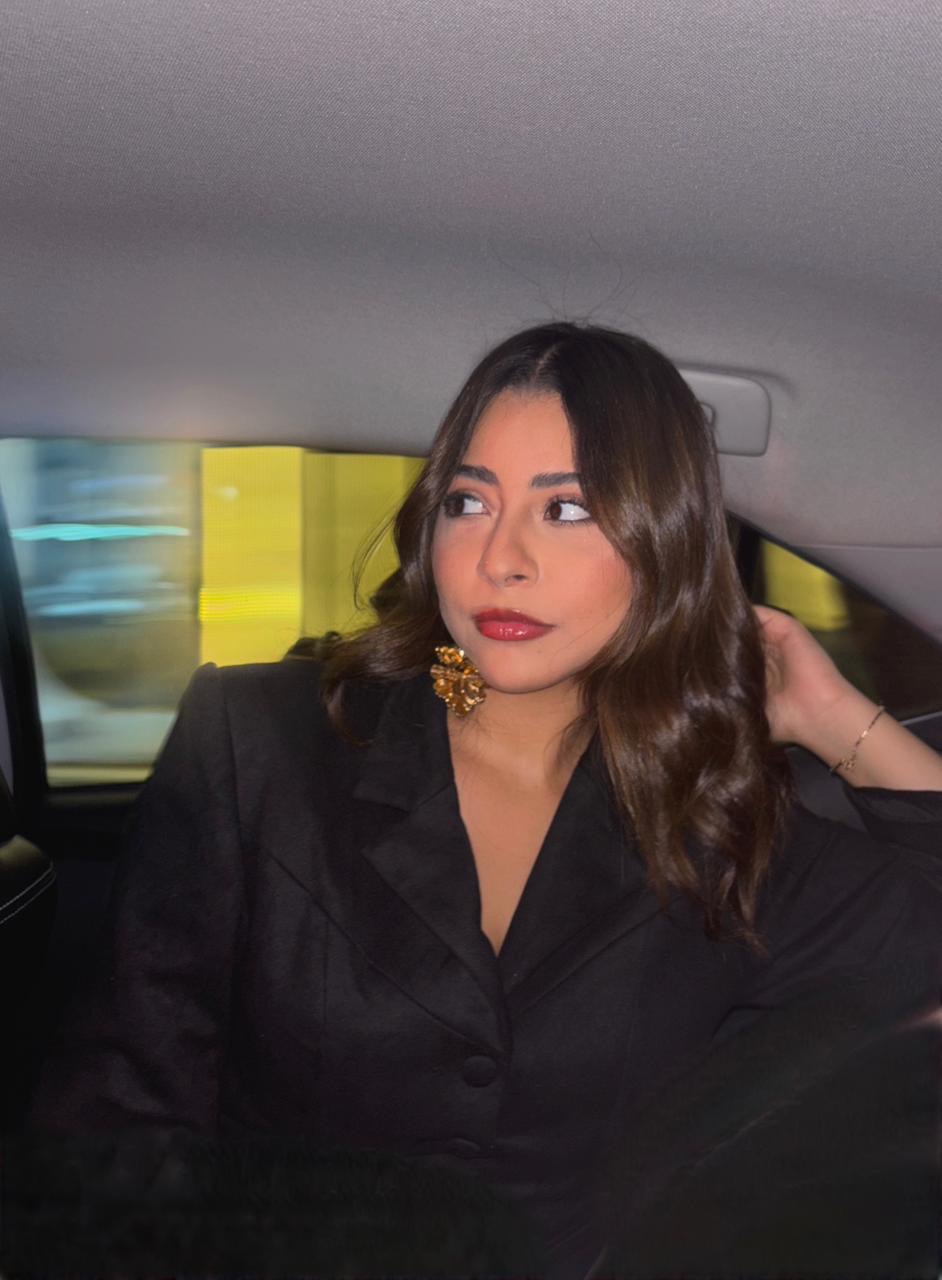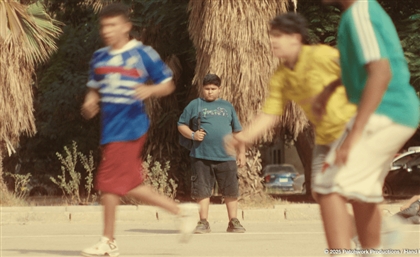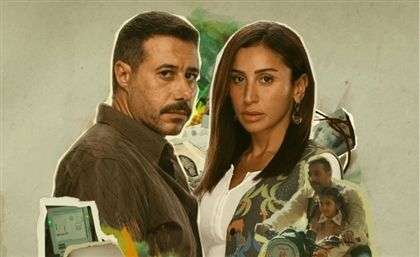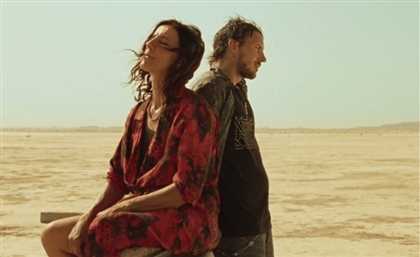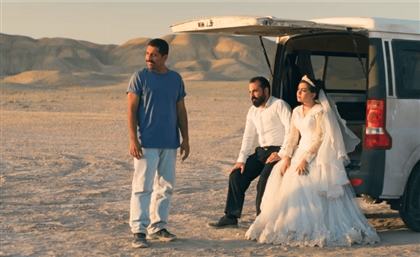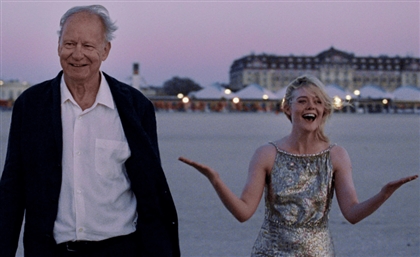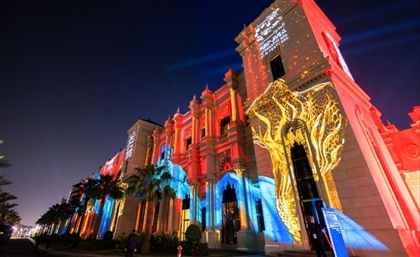To the Ancestors, Human & Non-Human: Ayman Zedani on Holistic Kinship
Saudi multimedia artist Ayman Zedani explores ecological kinship through immersive works spanning land, sea, and language.
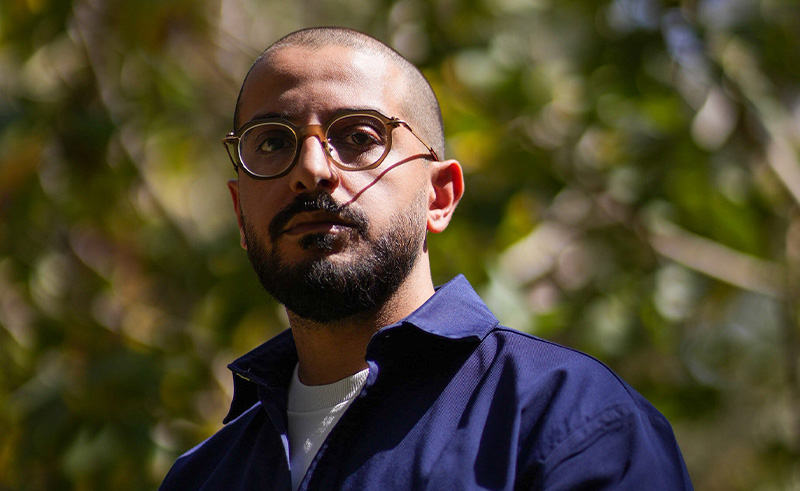
“To the ancestors, human and non-human.”
Ayman Zedani’s email signature is a tribute to the living and the long-gone, to species, spirits, and systems intertwined. We sat down with the Saudi multimedia artist to explore what he calls holistic kinship; the invisible threads binding humans, landscapes, and the more-than-human world across the Arabian Peninsula.
Zedani grew up near the Sarawat Mountains of Saudi Arabia's Aseer region, a long range of peaks that fundamentally shaped his vision. "I saw a lot of species there, and that was just the norm then," he explains, his voice carrying the measured cadence of someone who has spent considerable time thinking about our place in the natural world. "The importance of growing in these areas shaped my vision. It wasn’t that I was surrounded by nature, it’s that I was of it.” He moved to Riyadh when he was 15, a shift that proved revelatory. "It was a very different territory from what I was used to. There's something so mystical about the desert; it created a necessity, the importance of visiting these places again." And he did, conceptually.
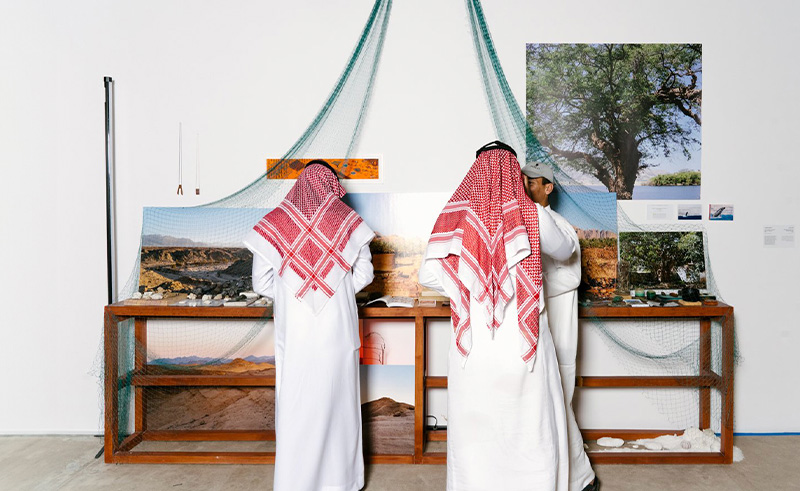
This move became the foundation for what he describes as "a personal project to establish my relationship with the Arabian Peninsula." But for Zedani, the personal and the ecological are inseparable. "Human and non-human, I don't really separate these things. Through time, this has become the basis of us as a species: we separate ourselves from anything non-human. But I went back to revisit them. Humans are the expression of nature itself. We are like passengers in a spaceship that contains us and everything around us."
Zedani’s philosophy seems to echo the 17th-century Dutch philosopher Spinoza, who argued against the Cartesian separation of mind and matter, proposing instead that everything in the universe is part of a single substance. "There's a holistic kinship about everything," he continues, and you sense this isn't theoretical for him; it's the animating principle of his practice.
Zedani tells me about the agricultural terraces of his childhood, structures that reveal the sophisticated ecological thinking of earlier generations. "Growing up in Aseer, they used to refer to these terraces as 'sudud', dams. They were actually thinking of these works in relation to water, not food, the way water was distributed to the land and to humans." The 2020 fires in Aseer, which destroyed large patches of forest, revealed the deeper wisdom of these ancient systems. "These terraces reflect the narrative of the region. The clay-like soil there doesn't absorb water fast, so it turns into flash floods. You hear about people being washed away by these floods, but these terraces were designed to give water enough time to be absorbed by the soil."
In Aseer, where water is not scarce, but sudden and overwhelming. The terraces were designed less for storing crops than for managing the volatile behaviour of rain. They slowed the descent of water across clay-heavy slopes, giving it time to seep into the soil rather than tear through the landscape in flash floods. This interpretation of terracing as hydrological infrastructure, an elegant choreography between land and water, stands in striking contrast to how terraces function elsewhere. In the arid zones of the Mediterranean, for instance, terraces cling to rocky hillsides not to delay abundance but to trap what little rain arrives. In the monsoon-soaked highlands of the Philippines, they become rice basins, synchronising with cycles of excess. And in the Andes, they serve as vertical ecosystems, responding to gradients of altitude and temperature as much as water. Across the world, terraces reflect not just agricultural necessity but cultural perception, what each society believes about water, time, and the land’s temperament based on what they experience.
This kind of traditional knowledge, what he calls "water harvesting from different perspectives," forms the backbone of his artistic practice. "I love to work with people in botany, archaeology and more, identifying our surroundings," he explains. "There's always a protagonist for each project, weaving factual information with fiction to reimagined the future. The practice looks into creating new stories, something really curious with a lot of contributors, weaving them into the project."
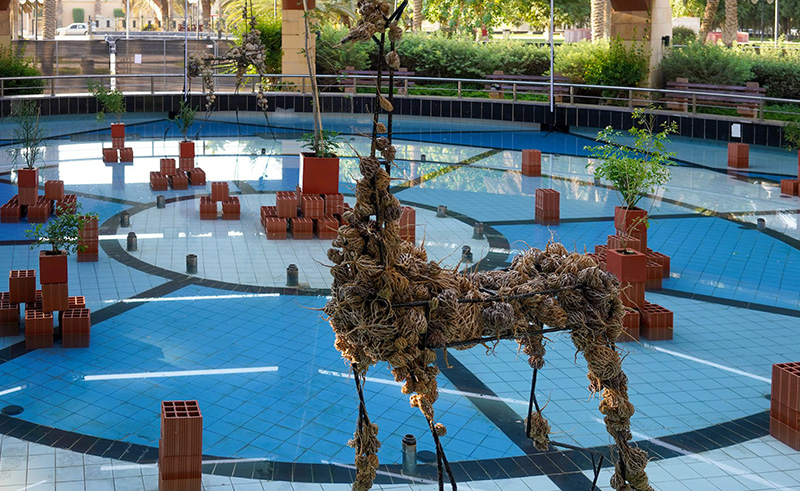
One of his most compelling investigations centres on the Arabian Sea Humpback whales of the Arabian Sea, a project that began with disturbing Soviet-era research and is called Between Desert Seas. "These whales are unique," Zedani explains, his tone shifting. "There was a research paper from the Soviet Union documenting a mission where they came to the sea and killed as many whales as possible, they killed 60% of the population. As they were opening them up, some had food, some were pregnant."
The tragedy led to an extraordinary discovery. When scientists took DNA tests from beached whales, they realised they were looking at a unique subspecies isolated in the Arabian Sea for an estimated 70,000 years. "They are not responding to other whales in other oceans when exposed to open seas, thousands of years in solitude. These whales developed their own language, their own song, their own culture," Zedani notes.
Through the Environment Society of Oman, he encountered people who had lived alongside these creatures for generations. "I met people who had encountered these whales and called them by specific names, champ, Luban, and others." This layering of scientific and traditional knowledge becomes central to his approach.
His installation work around the whales incorporates the story of Prophet Yunus, creating what he calls "spiritual ecology." The installation draws from both scientific research and spiritual narrative. At its core, it explores the ecological discoveries of the Arabian Sea, including the identification of a genetically unique whale population, and weaves them together with the story of the Prophet Yunus, who was swallowed by a whale and cast into darkness. “It’s a multilayered sonic installation that renegotiates our relationship with the seas surrounding the Arabian Peninsula,” Zedani explains. The piece gathers recordings made throughout the research process, whale songs, oceanic data, local oral histories, into an immersive sound environment. "The salt part references desalination and the hyper-salinity happening now with climate change, it took the place of fire. And there's darkness, like what Yunus experienced.
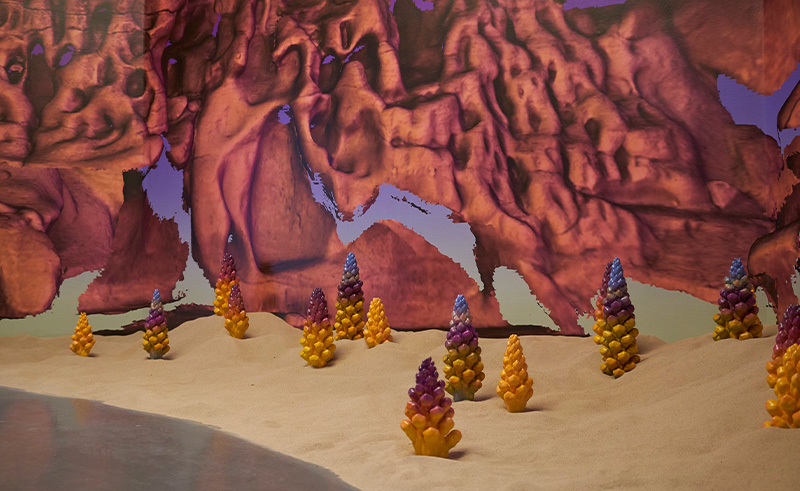
"What you see in the artwork is just the tip of the iceberg," Zedani reflects. Hazek, a village in Oman situated just metres from where the whales come to feed. Until 2017, when a road finally connected it to the rest of the country, the village was completely isolated, accessible only by sea. "They developed their own cultures," he explains. "The women of the village are free divers, I found a woman in her 60s who could free dive for seven minutes." The villagers call the whales Sultan el Bahar – the King of the Sea.
Language itself becomes a medium for exploration. His relationship with Arabic, "whether as a language, a script, or a sonic texture," influences his work in unexpected ways. "The works have both subtitles and titles, but the subtitles are not mirror translations," he explains. "I learned how to write Nabataean scripts, all mirrors of the Arabic language. The way Nabataeans used to speak was in Arabic, but they wrote in their own script.
This linguistic archaeology connects to his current project in AlUla, where he's working to "recreate a certain narrative in relation to the burial tombs" using Nabataean script. He is crafting a new narrative about the tombs and burial sites that evoke the mythic and symbolic landscape of the Arabian past. The core sentence that Zedani wrote to anchor the project on reads:
"إلى النسور مفاتيح الجسور لتسمح لنا العبور من خلال القبور إلى ما وراء النجوم"
“To the eagles, the keys of bridges, to grant us passage through the graves to what lies beyond the stars.”
“It seems like Saudi has opened a portal," Zedani says, reflecting on the cultural changes happening in the kingdom. "And it's important to tie it to our ancestral history."
Zedani speaks of what he calls “cultural pollination” taking place in AlUla, where craftspeople from regions with similar desert ecologies are invited to contribute their knowledge. One example is the team brought from Egypt’s Siwa Oasis, renowned for its centuries-old mud-brick construction techniques, to help revive sustainable building practices in the area. “AlUla brought people from Siwa to share their methods,” Zedani explains. “It’s a kind of cross-desert knowledge exchange—responding to similar climates with inherited techniques.”
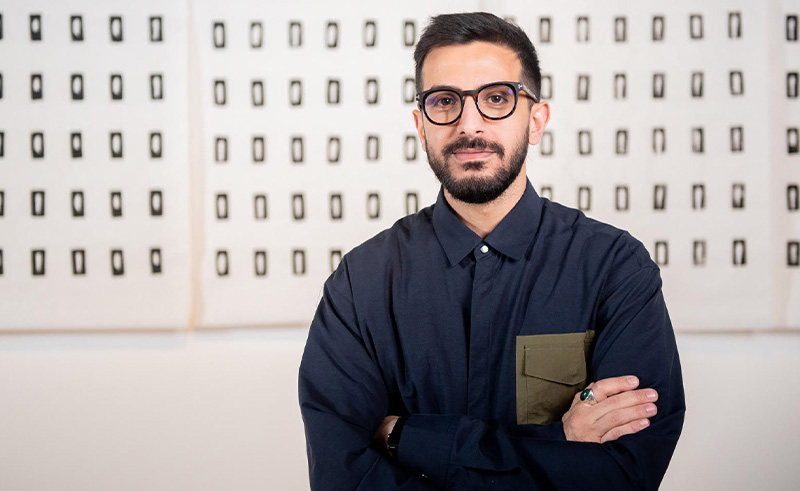
Zedani reflects positively on his experience with NEOM, the ambitious megacity project on Saudi Arabia’s Red Sea coast. "They invited us to go there for three months, and we were fascinated that most of the work is ecological, discovery of new species, and the largest coral nursery in the region. All water is recycled." His perspective reflects a pragmatic approach to navigating Saudi Arabia's complex transformation. "The thing about artists is that we are border crossers," he says. "We dream about how these things connect. What really interests me is what allows me to look into ecology."
This border-crossing extends to knowledge systems themselves. He references Indigenous Australian academic Tyson Yunkaporta's concept of ‘TEK’ – traditional ecological knowledge – as opposed to Western technology. "Indigenous TEK versus tech," he summarises, highlighting the difference between wisdom systems rooted in place and those that extract and commodify.
This year, at Dream City 2025 in Tunis, Saudi artist Ayman Zedani presents To the Water Hunters, an installation commissioned by L’Art Rue / Dream City and Art Jameel. Exhibited at Tourbet Sidi Bou Khrissane from 3 to 19 October, the work continues Zedani’s exploration of ancestral ecologies and the spiritual bonds between humans and the living environment.
Composed of sound, textiles, wax, pottery, and locally sourced materials, it transforms the historic site into a sensory ecosystem. Drawing on years of research into traditional ecological knowledge across the Arabian Peninsula, Zedani traces the Tarq, a mountain vocal tradition once used to coordinate agriculture, herding, and ritual.
Working with regional singers, potters, beekeepers, and botanists, he creates an immersive experience that listens as much as it speaks. To the Water Hunters reimagines ancient water practices, an ode to resilience, reciprocity, and the shared pulse of the human and more-than-human worlds.
Trending This Week
-
Dec 04, 2025


